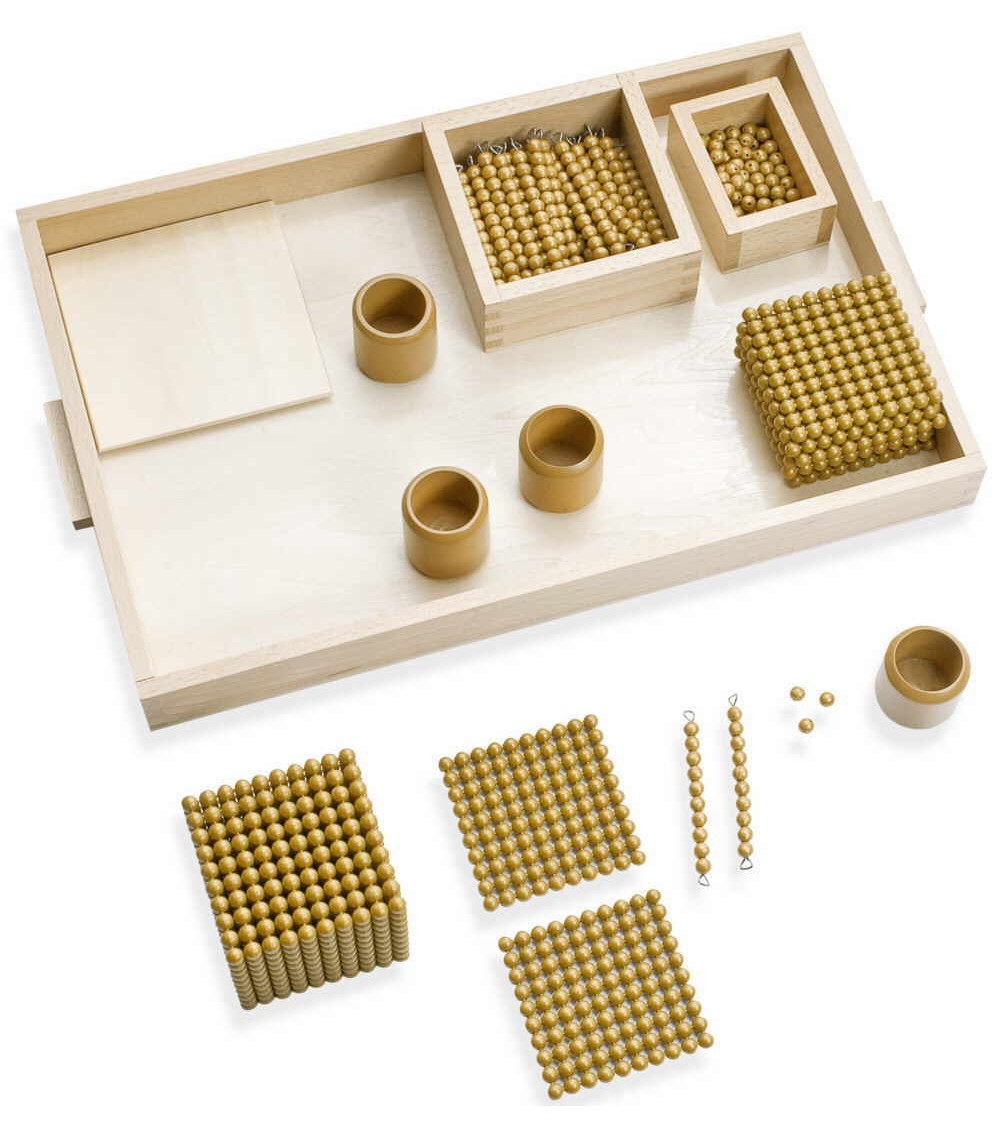Golden Pearl Material
Golden pearl material, Montessori material for learning arithmetic and easy visualization of numbers
163-piece set, with the wooden tray, plastic beads
The golden pearl material is probably the best-known and most diverse Montessori material in mathematics. With its handy pearls, pearl rods and pearl plates, it illustrates the proportionality in the number range up to 1000. The arithmetic child consciously perceives the significance of units, tens, hundreds and thousands - by counting individual pearls, coupling tens sticks into chains and stacking hundred plates on top of one another. An invaluable advantage even with arithmetic weaknesses, which often manifests itself by confusing or twisting numbers!
Children particularly enjoy practicing basic arithmetic with the golden pearl material: surveys among primary school students show that they simply like to touch the material (Emily, 2nd grade) and thus see where, for example, the decimal point is (Leon, 4th grade).
Application, advantages, areas of application for this Montessori material:
-
- Addition and subtraction up to 1000, especially with the tens transition
-
- Division and multiplication up to 1000
-
- Representation of any number in the decimal system
-
- Montessori material for children from 5 years
Scope of the Montessori bead material:
1 wooden tray for storage and transport, approx. 38 x 25 cm
1 wooden box with lid for the bead sticks, approx. 10 x 10 x 4 cm
1 wooden box for the individual beads, approx. 8 x 6 x 3 cm
4 small wooden cups for counting individual pearls. approx. diameter 3.5 cm, height 4 cm
1 solid thousand cube made of beads, plastic, approx. 7 x 7 x 7 cm
10 solid hundred plates made of beads, plastic, approx. 7 x 7 x 0.7 cm
45 tens bead sticks with Threaded loose pearls, plastic
100 single pearls, plastic, approx. diameter 7 mm
Instructions for the golden pearl material according to Montessori
An adult puts the tray with the bead material on the table. Now he takes the one-pearl
and says this is one. To the left of the one-bead, he puts the ten-stick and says That's ten. Now he compares the one-bead very emphatically with the ten-bar in order to clarify the difference in size. Also to the left of the tens bar is the hundreds plate. These are hundreds and the tens stick is compared with the hundreds plate. This is also done with the thousands cube (that's a thousand).
Please give me one; Please give me 10, please put the hundred on the table there, where are a thousand.
If the child still has difficulties with this assignment, calmly start the exercise from the beginning and possibly first take the one-pearl and the thousand-cube (two very different sizes).
If the child shows confidence in this exercise, the third of the three-step lesson comes:
the adult, for example, points to the tens rod: What is it? Now he points to the thousands cube: What is that?...
Now the thousands cube, the hundreds plate and the tens rod are dismantled. To
do this, the adult puts the ten sticks in front of him and counts aloud and places the same number of single pearls next to it.
one, two, three ......... ten - a ten consists of 10 ones

